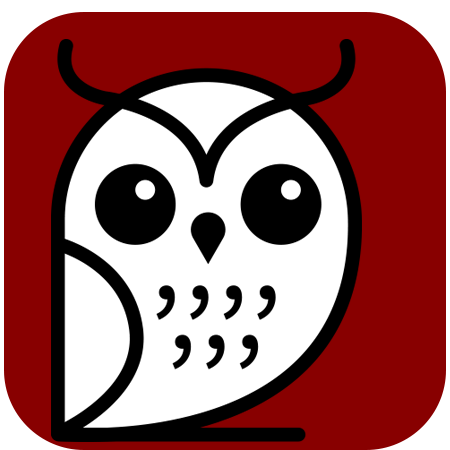In a universe full of information and content, storytelling helps brands connect with their audiences and communicate their offer in an entertaining way. A story can move us and lead to different actions, who has not cried with a romantic movie or has been angry because a series does not end as we wanted?
When we use storytelling in marketing, one key is that our audience identifies with the protagonist, hero or antihero, of the story. As brands, we can create stories that resonate with our consumers and let them know the stories that might interest them, for example, how the company was founded, what was the vision of the founders, what improvements have been made over time, etc. many others.
Joseph Campbell and the hero’s journey
There are different formats to tell a story. According to the Aristotelian school, they are structured in:
- Approach:The protagonist and his ordinary world are introduced.
- Knot: It is the core of the story, a problem arises that takes the protagonist out of his usual routine or the world as he knows it, and he must face various tests.
- Denouement: It is the resolution in which the protagonist returns to the ordinary world that he left, but he is no longer the same, because he has gained experience after what he lived.
A much more detailed study of this basic structure is described by Joseph Campbell, who in his book The hero with a thousand faces, talks about the 12 stages that a character goes through. Different cultures in the world use this format, with some adaptation, to talk about the heroes in their myths. These 12 stages are:
- Ordinary world. We are presented with an initial state, the life of someone at a certain moment as well as their environment and important relationships.
- Call to adventure. It is the moment in which the character separates from his routine, for this an extraordinary event must occur.
- Rejection of the call. On many occasions, the protagonist refuses to go on this adventure, there is resistance to change, either out of fear or due to some other circumstance.
- Meeting with the mentor. While the hero is debating whether or not to heed the call to adventure, a nearby character, a guide or magical helper will give him news or give him some item that will help him. will make the decision to finally undertake the journey.
- Crossing the first threshold. In this stage, our protagonist dares to leave what is known and finds himself for the first time in a new environment, facing situations that he does not know.
- The path of trials. Our protagonist faces various challenges, some he faces victoriously, in others he is defeated.
- Internment in the deepest cavern. As you progress on your path, the tests become increasingly difficult. He knows his enemies better and gains important information that will come in handy when he reaches the end of his journey.
- The odyssey, death and resurrection. It is the climax of the story, it is a moment in which after going through a major crisis or a very demanding test, his fate is decided. Here the hero goes through another threshold, but this time the experience gained makes him rise to the challenge.
- The reward or elixir of knowledge.After having gone through this important challenge, the protagonist receives an award or reward for his actions. However, it is a temporary triumph, because he has not yet fulfilled his goal and must continue on his way.
- I return with pursuit. The hero sets out on his way home but this time he will face a problem again, either a chase or learning that his enemy has not been defeated.
- New resurrection. It is the last challenge of the protagonist.
- I return with the elixir of knowledge. Finally, the hero returns to the ordinary world from which he departed, to find that it is now different. There are two variants for the closure.
- Circular closure: The protagonist returns to his usual routine, being a little wiser than before.
- Open closure: Some frame or subframes remain unresolved. Allows for the possibility of a sequel.
Elements of a story
Jill Avery, in her article “Brand Storytelling” , points out four elements that cannot be missing in a story:
- A pertinent message or moral. It is the ideological or moral question that pervades the story, since it is an ideal such as freedom. The best stories do not make the moral explicit, but rather it is left to the discretion of the recipients.
- A familiar set of characters. They represent different types of people. Often when brands use storytelling, they employ actors or actresses that consumers admire and aspire to be like them.
- A significant conflict. It is the engine of the stories, what generates the changes towards which a transition is made, generally the villains are an important part of the conflict of the stories, the heroes must face to them.
- A recognizable plot. Each part of the story must contribute to the message that is to be given, from the first scene a promise is made to the audience about the development of what they are about to see or read.
Examples of storytelling in marketing
Duolingo
Duolingo is a web platform for free language learning. His mascot is Duo, a green owl that shows a huge range of emotions based on the results users get on their language tests. In their social networks they create funny stories about Duo, for example, in the following video a lawyer named Peter Francis Menchetti offers his services to sue the character.
Starbucks
This company has many examples of storytelling. In this commemorative video for its 50 years, they narrate the history of the brand, the company’s philosophy and how they fulfill their mission of “inspiring and nurturing the human spirit: one person, one cup and one community at a time” .
Apple
Much can be said about the personality of Steve Jobs, but something that cannot be denied or questioned is that he was a great presenter, who knew how to communicate his vision and speak passionately about his products. In this video we can see the presentation of the iPhone. Jobs tells us the story of the development process, the challenges they faced, and finally, how they came to the final design.
In conclusion…
- The way people perceive stories is very different from how we receive traditional advertising.
- Having a storytelling strategy is a great opportunity for brands to connect with their audience without boring them.
- We all have a story to tell, you don’t have to be a world-renowned brand to tell a good story.
- Stories influence emotions and make our messages memorable.
Do you want to find your brand story? Contact us and let’s discover it together.


